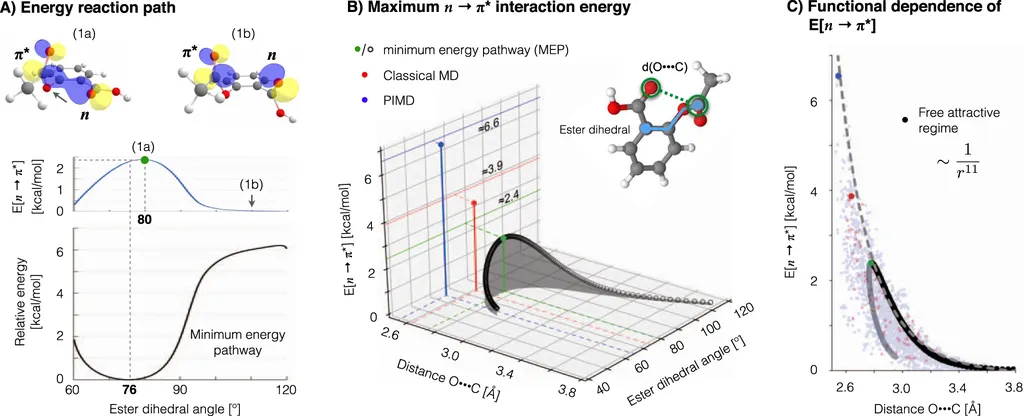Researchers Leonardo Cázares-Trejo, Marco Loreto-Silva, and Huziel E. Sauceda from the National Autonomous University of Mexico have developed a new method to improve the accuracy of machine-learned force fields (MLFFs) in modeling noncovalent interactions. Their work, published in the journal Nature Communications, addresses a significant challenge in the field of computational chemistry and materials science.
Noncovalent interactions, such as van der Waals forces, hydrogen bonding, and ion-π interactions, play a crucial role in determining the structure, dynamics, and properties of materials and molecular systems. However, accurately modeling these interactions alongside covalent forces has been a persistent challenge for MLFFs, particularly for global models that use Coulomb-matrix descriptors. The researchers found that the mismatch between the predominantly covalent force labels and the overrepresentation of intermolecular features in the Coulomb matrix biases the training of single global models, leading to degraded accuracy.
To overcome this issue, the researchers introduced a new method called Δ-sGDML, a scale-aware formulation within the sGDML framework. This approach explicitly decouples intra- and intermolecular physics by training fragment-specific models alongside a dedicated binding model. During inference, these models are composed to provide a more accurate representation of the system. The researchers demonstrated the effectiveness of Δ-sGDML across various molecular systems, including benzene dimers, host-guest complexes, and benzene-water and benzene-Na+ interactions. They observed consistent improvements over single global models, with fragment-resolved force-error reductions of up to 75% without any loss of energy accuracy.
Furthermore, molecular dynamics simulations confirmed that the Δ-model yields a reliable force field for the C60@buckycatcher system, producing stable trajectories across a wide range of temperatures (10-400 K). In contrast, the single global model lost stability above approximately 200 K. This method offers a practical route to homogenize per-fragment errors and recover reliable noncovalent physics in global MLFFs, which can be valuable for the energy industry in applications such as materials design, drug discovery, and understanding complex chemical processes.
The researchers’ work highlights the importance of accurately modeling noncovalent interactions in computational chemistry and materials science. By improving the accuracy of MLFFs, their method can contribute to the development of new materials and technologies, including those relevant to the energy sector. The study was published in Nature Communications, a leading journal in the field of scientific research.
This article is based on research available at arXiv.

